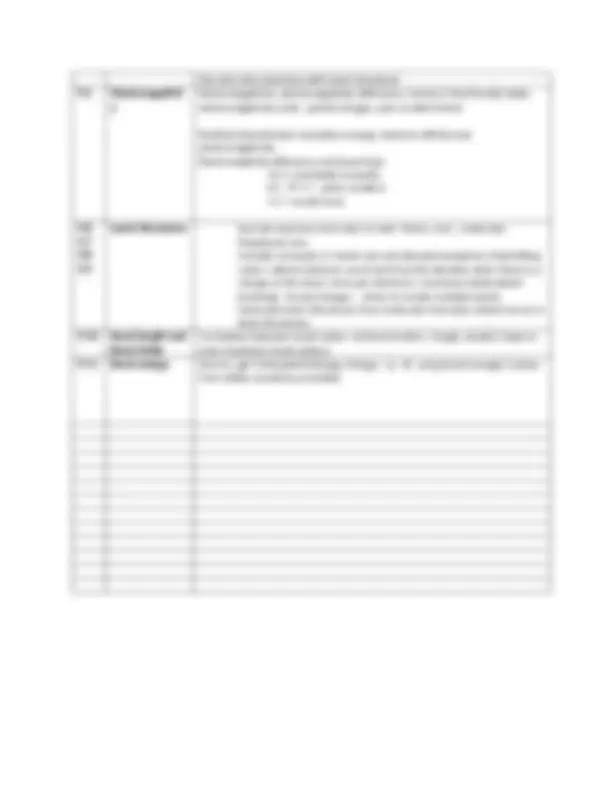



Study with the several resources on Docsity

Earn points by helping other students or get them with a premium plan


Prepare for your exams
Study with the several resources on Docsity

Earn points to download
Earn points by helping other students or get them with a premium plan
Community
Ask the community for help and clear up your study doubts
Discover the best universities in your country according to Docsity users
Free resources
Download our free guides on studying techniques, anxiety management strategies, and thesis advice from Docsity tutors
This chapter from a chemistry textbook covers the concepts of ionic and covalent bonds, including lewis structures, ionic radii, electron configuration of ions, and electronegativity. It also discusses the formation of ionic bonds through the born haber cycle and the differences between coordinate covalent bonds and regular covalent bonds. Students are encouraged to try various problems, including those related to lewis structures and ionic radii.
Typology: Study notes
1 / 2

This page cannot be seen from the preview
Don't miss anything!


Chapter 9 Recommended Problems: Brown-Box problems and suggested further problems in the back. Selection of further problems in back of Chapter as good options. Brown box problems would be a very good start, including the further suggeseted problems. VERY IMPORTANT: Lewis structures from Lab Exercises (note that the full answers have been provided, along with geometries, via E-mail attachment sent on or about 7 April-Check FerrisConnect) Also, try 35, 39, 41, 47, 55, 59, 61, 65, 71, 75, 77, 83, 107, 120. 9.1 Ionic Bonds Neutral elements ionizing through redox to become ions following the octet rule Lewis dot structures for neutral and ionized elements, also proper e configuration notation Effect of charge and distance on Lattice energy “U” Consider E = constant (Q1 x Q2/r). Compare (qualitatively) stabilities of ion pairs of crystals with differing charge and radius (r = distance between) Energetics Born Haber Cycle (fig 9.3). Going to gas phase atom from elements in their standard form , cation/anion formation, coming together of opposite ions to make crystal in 3-D. Q. Which step RELEASES the most energy (is stabilizing/) 9.2 Electron config of ions a) Octet rule for Main Group Cations and Anions is most important of these. Groups IA-IVA metals lose 1-4 e. Groups VA-VIIA elements gain 3-1 e. b) Tendency of transition metals to lose ns electrons first c) In addition to octet rule predictor as expected (Tl+3,Pb+4, Sn+4, Bi+ as ox states) (Group # -2) charge is another pattern, as the two ‘s’ electrons only are lost first for these. Result Tl+1,Pb+2, Sn+2, Bi+ d) Transition metals ‘s’ electrons are often lost first. 9.3 Ionic Radii Ionic radii. Increasing (+) charge –effect on radius and why Increasing (-) charge –effect on radius and why Left-right and up down trends in radius (note that anions will behave differently from cations and increasing charge (+ or -) has an effect as well What is an isoelectronic series? 9.4 Covalent Bonds Potential Energy Diagram Fig 9.11 Know the important parts of this diagram. Discussed extensively in class. What allows covalent bonds to be stable? Coordinate covalent bonds. How different from ‘regular” covalent bonds? Octet Rule see also above (previous sections) and how to make multiple bonds.
See also class exercises with Lewis structures 9.5 Electronegativit y Electronegativity, electronegativity difference, trends in the Periodic table, electronegativity scale, partial charges, polr covalent bond. Realtionship between ionization energy, electron affinity and electronegativity. Electronegtivity difference and bond type <0.5 essentailly nonpolar 0.5 1.7 polar covalent
1.7 mostly ionic **9.
Lewis Structures** See Lab exercises and notes as well. Atoms, ions, molecules. Polyatomic ions. Includes concepts of Octet rule and allowed exceptions (shell-filling rules), valence electron count and how this deviates when there is a charge on the atom, lone pair electrons, resonance (delocalized bonding) , formal charges , when to invoke multiple bonds. Generate Lewis Structures from molecular formulae; detect errors in lewis Structures. 9.10 Bond length and Bond Order Correlation between bond radius and bond orders (single, double, triple or even fractional bond orders) 9.11 Bond energy How to get Estimated Enthalpy Change (H) using bond energies (values from tables would be provided)